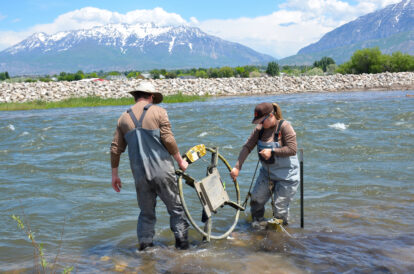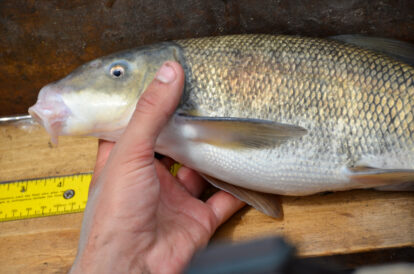Biologists tout human benefits to June Sucker restoration work
- Andrew Nagy, June Sucker biologist, holds a female June Sucker at the Provo River Delta on Monday, June 5, 2023.
- Keith Lawrence and Becca White carry a portable antennas back into the Provo River at the Provo River Delta on Monday, June 5, 2023.
- Andrew Nagy holds a June Sucker while Becca White, wildlife technician, scans it for a Passive Integrated Transponder tag at the Provo River Delta on Monday, June 5, 2023.
- A June Sucker is measured at the Provo River Delta on Monday, June 5, 2023.
- Becca White holds a Passive Integrated Transponder tag before it is implanted in a June Sucker at the Provo River Delta on Monday, June 5, 2023.
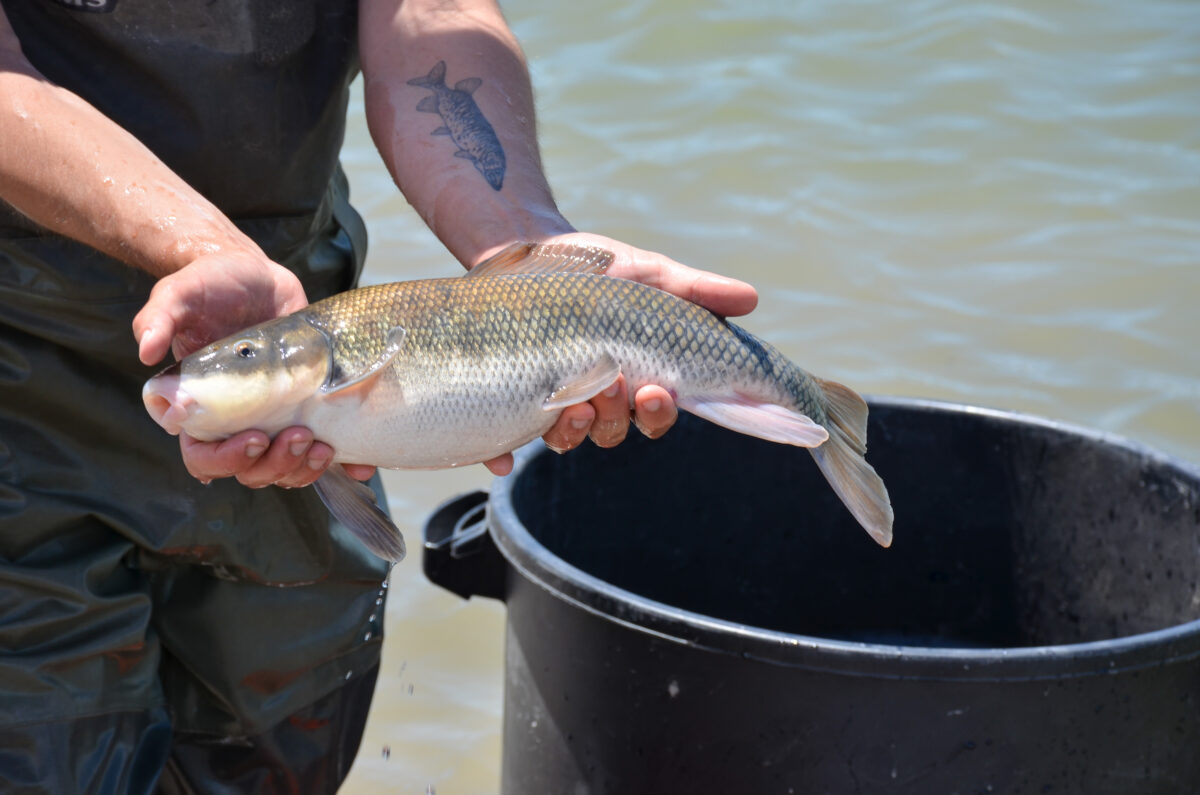
Nichole Whiteley, Special to the Daily Herald
Andrew Nagy, June Sucker biologist, holds a female June Sucker at the Provo River Delta on Monday, June 5, 2023.
The restoration of the June sucker is the primary reason the Provo River Delta was constructed, but it’s not the only beneficiary.
“Even though June sucker was the primary motivating factor, it’s not the only beneficiary of it.” In March, the Provo River was diverted into the Provo River Delta, 260 acres of channels and ponds that flow into Utah Lake. The project will finish in 2024, and new species of birds have appeared since the diversion along with June Suckers swimming up the delta from Utah Lake.
Now listed as threatened, the restoration process is ongoing, and the delta is a large step toward, one day, saving the June sucker. Andrew Nagy, June Sucker biologist, said he hopes the species’ restoration “can be a point of pride for our community to save this thing that is so unique to the area.”
Regular monitoring surveys are conducted by the Utah Department of Natural Resources to analyze the usage of the delta by the June Sucker. Keith Lawrence, native aquatics project leader, said 5,000 June Suckers were detected swimming up the Provo River through the old channel last year.
That channel is now blocked from fish, diverting them to the delta. June Suckers are tracked using two permanent antennas and six portable antennas that detect a microchip called a Passive Integrated Transponder tag, which biologists implant into the fish.
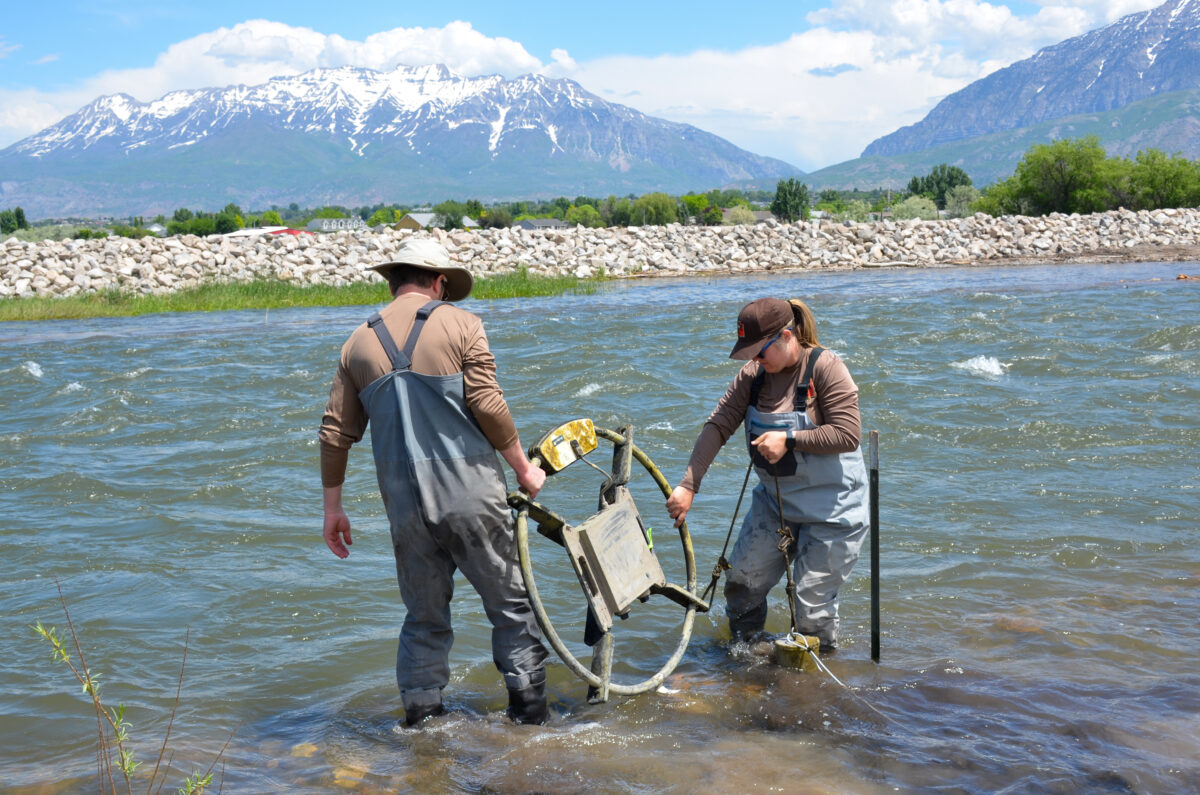
Nichole Whiteley, Special to the Daily Herald
Keith Lawrence and Becca White carry a portable antennas back into the Provo River at the Provo River Delta on Monday, June 5, 2023.
Lawrence said only 10-20% of the June Sucker population have the PIT tag and that there have already been around 4,000 detections this year. The 4,000 detections do not account for any untagged June Sucker using the delta or those that travel lower than the permanent antennas.
“The June sucker is definitely a good example of a flagship species where efforts that go into benefiting it also benefit a lot of other animals and also humans,” Nagy said.
The funding from the June Sucker restoration made it possible to restore much of Utah Lake’s natural habitat including planting native species and cleaning the water, Nagy added. This makes Utah Lake is safe for people to swim and catch fish, unless notices are in place due to an algal bloom that releases toxins.
The habitat of the delta has brought a host of new species to the area. White said birds such as common mergansers, barn swallows, cliff swallows, different types of ducks, kingfishers, ospreys, two bald eagle nests and more have been spotted since the water was diverted into the delta.
In addition to the wildlife aspects, scientists hope the delta’s recreation options will help residents acclimate to the area.
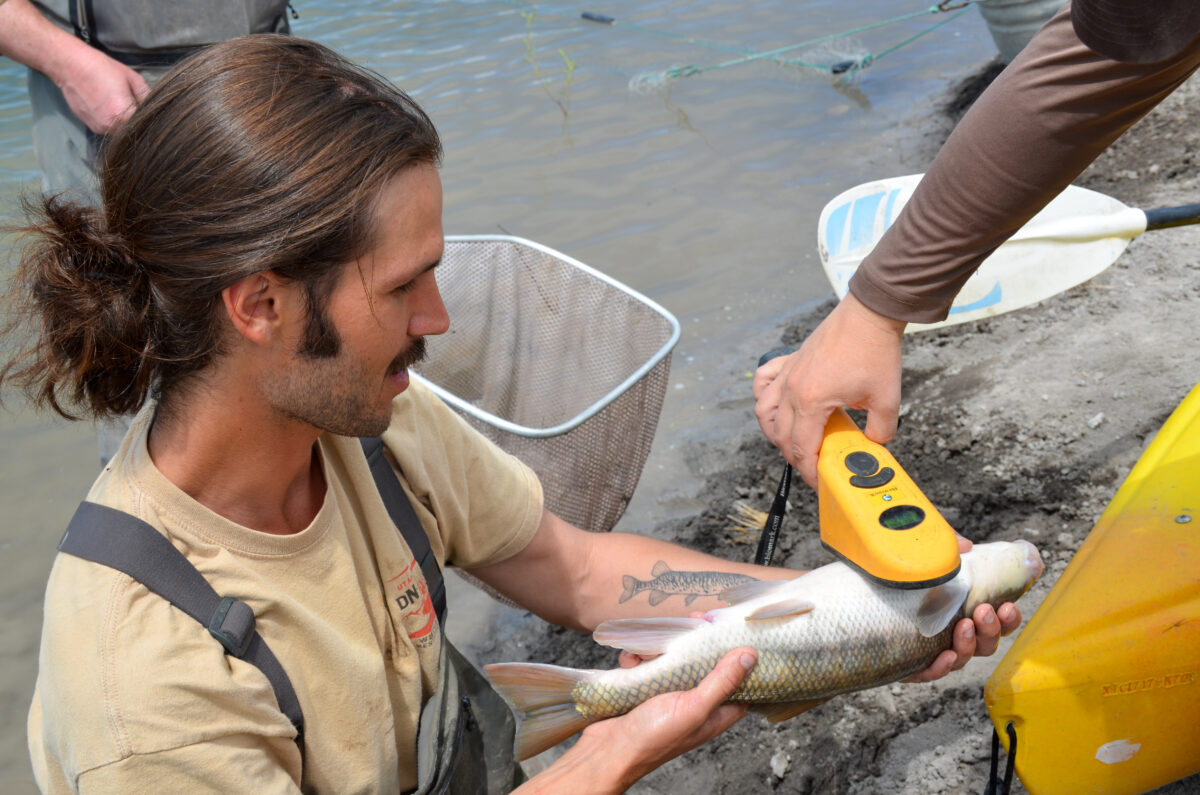
Nichole Whiteley, Special to the Daily Herald
Andrew Nagy holds a June Sucker while Becca White, wildlife technician, scans it for a Passive Integrated Transponder tag at the Provo River Delta on Monday, June 5, 2023.
“We’re trying to convey too, that even if you don’t care about them [the June sucker], try to understand that a lot of good has come that’s been directed at the June Sucker, being in the way of getting more water in the river or cleaning up the water quality and things of that nature,” Lawrence said.
One difference between the old channel and the delta is the ability for successful spawning. The delta, with its combination of rocks, native vegetation and sunlight, provides the ideal habitat for young June Sucker larvae to grow and, Nagy hopes, survive in Utah Lake.
The delta is restoring a small section of what used to be the natural habitat for the June Sucker hundreds of years ago, Lawrence said. One of the biggest concerns, though, is invasive carp species in Utah Lake.
Efforts are currently being made to remove any carp that have already entered the delta and prevent the species from becoming completely invasive.
Becca White, wildlife technician, said invasive carp would destroy the vegetation needed for June Sucker larvae to survive in the delta the same way they did in Utah Lake. The vegetation in the delta is vital for juveniles because it provides food and space to hide from predators. June Sucker are most vulnerable when they are more developed than larvae, but not yet fully grown.
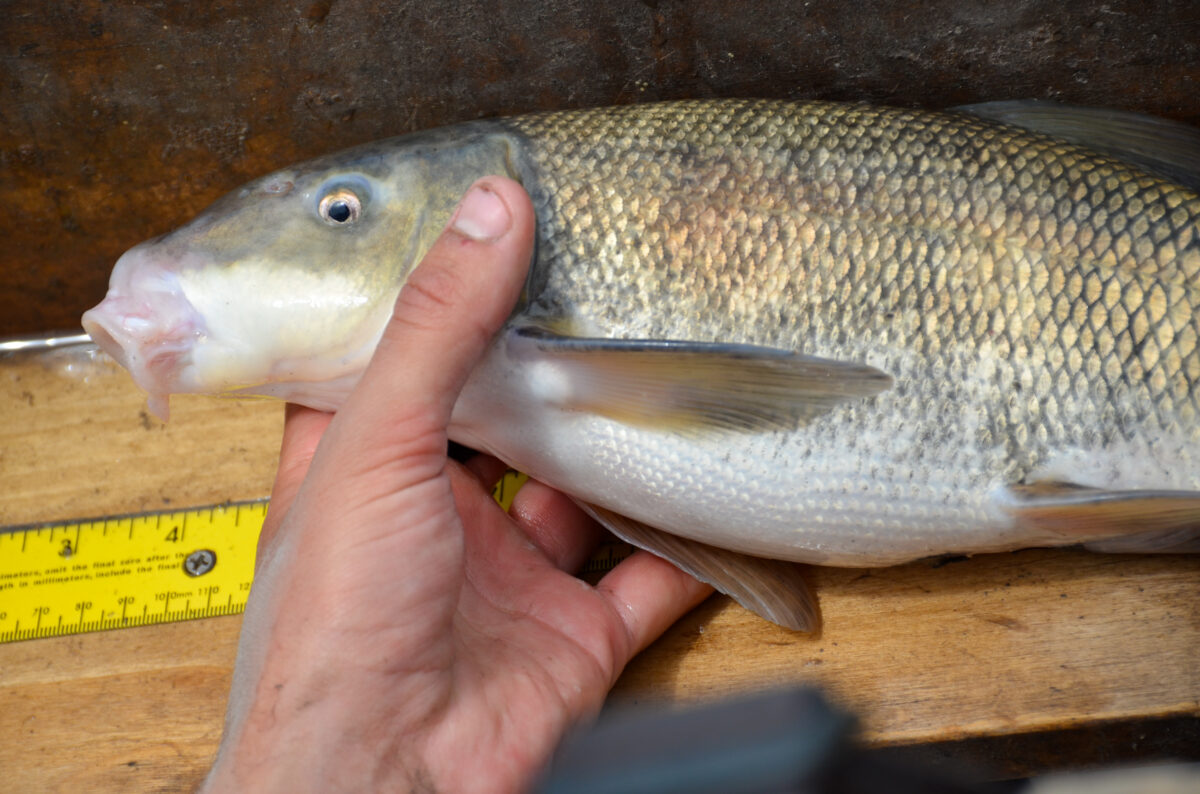
Nichole Whiteley, Special to the Daily Herald
A June Sucker is measured at the Provo River Delta on Monday, June 5, 2023.
“The biggest charge of ours, I feel, is being able to get out here and document how many of these little guys there are,” Lawrence said. “One of the things that’s really been emphasized from the get-go, is that we need to be adaptive in not just how they’re managing the delta, but then also in the survey program, the sampling program that we use for June Suckers and other species of fish and for vegetation.”
Many of the existing June Suckers are produced in a hatchery and transported to the lake, which has helped to grow the population. Over time, DWR will be able to determine their level of success based on the species’s ability to naturally produce a stable or increasing population.
As for the delta, Lawrence said it is an ongoing project that will need to continually be maintained to ensure the habitat remains healthy for the various species.
“Without projects like this, I think that the June Sucker would languish and they would either go to extinction or they would never get back to a self-sustaining level where they could maintain some population size on their own without intervention,” Lawrence said. “It is a living thing, a living changing thing that every year will be different. That’s what keeps life interesting.”
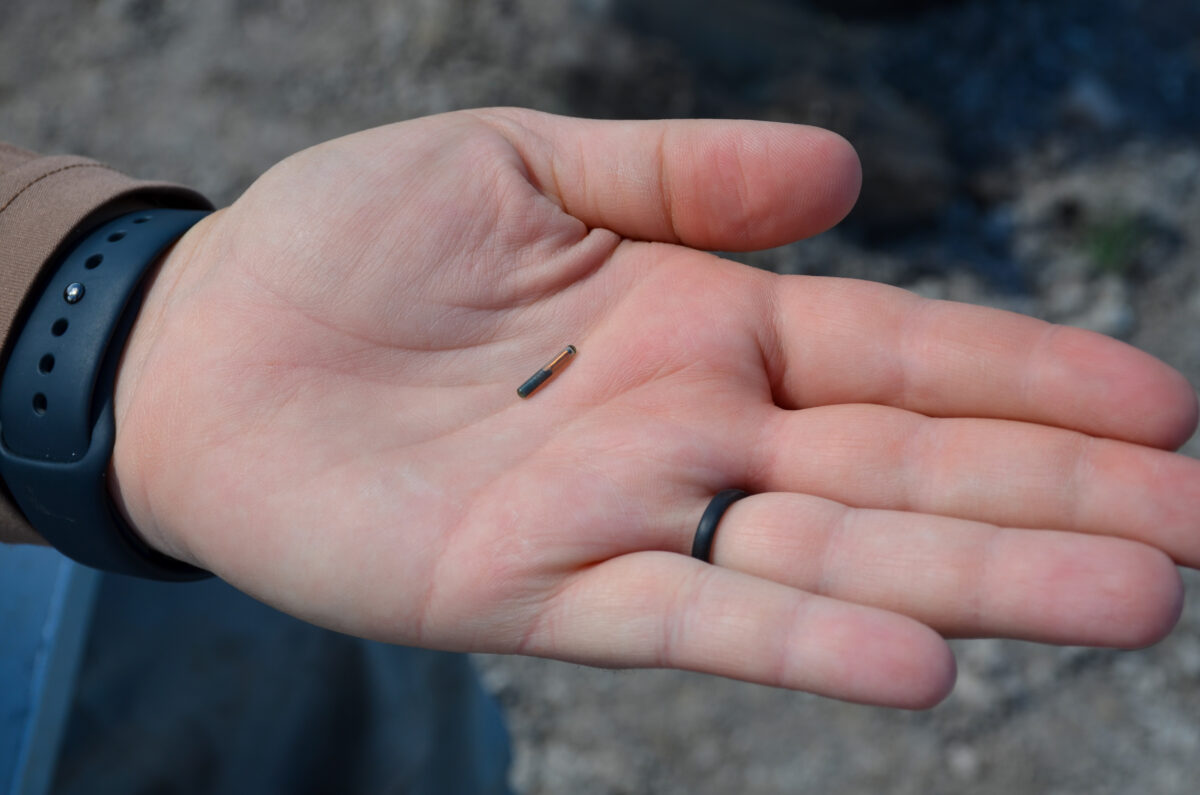
Becca White holds a Passive Integrated Transponder tag before it is implanted in a June Sucker at the Provo River Delta on Monday, June 5, 2023.


